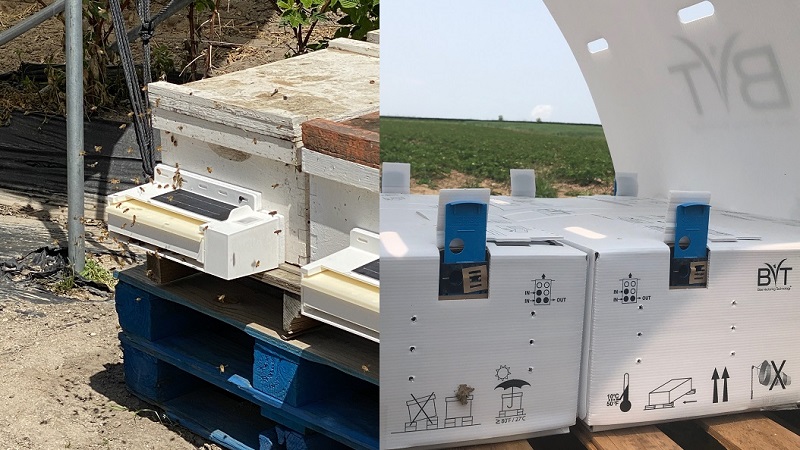Climate Change Could Spark Surge in Pests That Target Key Fruit and Nut Crops
As a result of climate change, California’s farms are expected to face a surge in agricultural pests, which poses a threat to the state’s specialty crops industry. Populations of three major insect pests – codling moth, peach twig borer, and oriental fruit moth — are projected to increase mainly due to rising temperatures, according to a study recently published in the journal “Science of the Total Environment” by a team of researchers at University of California Agriculture and Natural Resources and the USDA California Climate Hub.
“These three pests are notorious for infesting most of the walnut, almond and peach orchards of California, causing extensive damages by reducing quality of fruits and nuts,” says study co-author Jhalendra Rijal, UC Cooperative Extension integrated pest management advisor and entomologist for Stanislaus, San Joaquin and Merced counties.
Climate change can lead to shifts in the timing of seasons, including warmer winters, earlier springs and hotter summers, and these conditions can disrupt the natural life cycles of pests.
The new research, led by Prakash Jha, UC Agriculture and Natural Resources Assistant Project Scientist, compared pest populations in recent and future climates. The scientists used temperature projections from scientific models to predict the potential impact of climate change on codling moth (Cydia pomonella), peach twig borer (Anarsia lineatella), and oriental fruit moth (Grapholita molesta).
The UC study revealed that due to increases in temperature, these insects are expected to appear up to 28 days earlier in the spring and the time between generations is expected to shorten by up to 19 days. The changes may be gradual, but the study predicts that we may see up to a half-generation of these pests added within the next 20 to 30 years.
The increase in these pest populations poses a serious threat for future pest management, which would subsequently affect the state’s economy and employment related to specialty crops, warns Rijal.
“Codling moth is the primary pest of California’s walnuts, which occupies over 365,000 acres,” Rijal says. “Similarly, peach twig borer and oriental fruit moth are two major economic pests of peaches. Growers must control almost every generation of these pests to protect the fruit.
“Additional generations of these pests within the same growing season will likely increase crop damage. It certainly increases the number of sprays needed to control these pests, increasing the production cost for growers. Plus, more use of insecticides has consequences for beneficial insects and the environment.”
Growers may need to adapt their pest management strategies to address the impact of climate change on these pests.
For years, the UC Integrated Pest Management guidelines have suggested putting oriental fruit moth traps out in peach orchards by Feb. 15 in the San Joaquin Valley and Feb. 20 in the Sacramento Valley.
“This year, likely due to warmer winter, as suggested in this study, we observed the beginning of the moth’s activity in traps (also called biofix) as early as Feb. 14,” Rijal says, “meaning that the trap placement date must move earlier to capture the first moth activity. We are revising the guidelines to change the trap placement date to Feb. 7 for the entire Central Valley.”
Developing a holistic climate-smart pest management strategy will build resilience, Jha says. This approach combines pest control with prevention and reduction, such as planting pest-resistant crop varieties, sanitizing the orchards during the winter, harvesting early to avoid later pest generation infestation, using biological control such as natural enemies, and deploying mating disruption techniques.
For more, continue reading at ucanr.edu.









